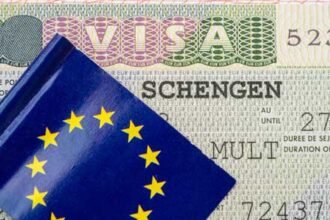The D-Visa, also known as a national visa, is a crucial document for individuals planning to stay in a European Union (EU) member state for more than 90 days. Unlike the Schengen Visa, which permits short-term travel within the Schengen Area, the D-Visa is issued for long-term purposes such as work, study, family reunification, or research. Each EU country has specific requirements for granting a D-Visa, reflecting its immigration policies and national interests.
This article provides a detailed guide on the D-Visa, including its purpose, eligibility requirements, application process, and tips for a successful application.
What Is a D-Visa?
A D-Visa is a long-term visa that allows non-EU nationals to reside in an EU member state for an extended period, typically beyond 90 days. It is issued for specific purposes, such as:
- Employment
- Academic studies
- Research
- Family reunification
- Specialized training or internships
Key Features:
- Country-Specific: A D-Visa is valid only in the issuing country. Additional permits may be required for travel within the EU.
- Duration: Typically issued for stays between 3 months and 1 year, depending on the purpose.
- Transition to Residence Permit: In many cases, a D-Visa serves as a precursor to obtaining a long-term residence permit.
Who Needs a D-Visa?
Non-EU nationals intending to stay in an EU member state for more than 90 days typically require a D-Visa. Exceptions may apply to citizens of countries with specific bilateral agreements with the EU.
Common Scenarios Requiring a D-Visa:
- Work and Employment:
- Individuals with a valid job offer or employment contract in an EU country.
- Academic Studies:
- Students enrolled in degree programs at EU universities.
- Family Reunification:
- Family members of residents or citizens of an EU country.
- Research and Training:
- Researchers, trainees, or individuals participating in academic exchange programs.
Some countries that offer D-Visa are:
- Germany
- Finland
- Malta
- Switzerland
- and others
General Requirements for a D-Visa Application
While the exact requirements vary by country, most EU nations follow a similar framework for D-Visa applications.
1. Valid Passport
- Must be valid for at least six months beyond your intended stay.
- Include copies of all relevant pages.
2. Application Form
- Complete the official D-Visa application form provided by the embassy or consulate of the target country.
3. Passport-Sized Photos
- Typically two recent photographs meeting biometric standards.
4. Purpose-Specific Documents
- Employment: Job offer or employment contract.
- Study: Acceptance letter from an educational institution.
- Family Reunification: Proof of relationship and residence status of the sponsor.
- Research: Invitation or sponsorship letter from a recognized institution.
5. Proof of Financial Means
- Bank statements, sponsorship letters, or proof of income to demonstrate financial stability during your stay.
6. Health Insurance
- Comprehensive medical insurance covering the duration of your stay.
7. Police Clearance Certificate
- Proof of a clean criminal record from your home country.
8. Visa Fee
- Pay the applicable visa processing fee (varies by country).
Application Process for a D-Visa
The D-Visa application process involves several steps, starting from gathering documentation to attending an interview. Here’s a step-by-step guide:
Step 1: Research Country-Specific Requirements
Visit the official website of the embassy or consulate of the EU country where you intend to apply. Review their specific requirements and application guidelines.
Step 2: Gather Required Documents
Ensure all documents are complete, accurate, and meet the country-specific standards. Missing or incorrect documentation can delay or reject your application.
Step 3: Schedule an Appointment
Book an appointment at the relevant embassy or consulate. Some countries allow online bookings, while others require phone or in-person scheduling.
Step 4: Complete the Application Form
Fill out the D-Visa application form accurately. Include personal details, purpose of travel, and intended duration of stay.
Step 5: Attend the Visa Appointment
Bring your documents to the embassy or consulate at the scheduled time. Be prepared to:
- Submit your application form and supporting documents.
- Provide biometric data (fingerprints and photograph).
- Pay the visa processing fee.
- Answer questions during a brief interview.
Step 6: Wait for Processing
The processing time for a D-Visa varies by country but generally takes 2 to 8 weeks. Some applications may require additional documentation or background checks.
Step 7: Receive Your Visa
If approved, you will receive your D-Visa stamped in your passport. Review the visa’s validity period and any associated conditions.
Common Challenges in the D-Visa Application Process
1. Incomplete Documentation
- Ensure all documents are complete and meet the embassy’s requirements.
2. Financial Insufficiency
- Provide clear evidence of sufficient funds to cover your stay.
3. Delays in Processing
- Apply well in advance of your intended travel date.
4. Language Barriers
- Translate documents into the required language, if necessary.
Tips for a Successful D-Visa Application
- Start Early:
- Begin your application process several months before your planned departure.
- Double-Check Requirements:
- Pay close attention to the country-specific guidelines.
- Be Honest:
- Provide accurate information in your application and during interviews.
- Prepare for the Interview:
- Practice answering questions about your purpose of travel, plans, and financial situation.
- Seek Professional Assistance:
- Consider hiring an immigration consultant or lawyer for complex cases.
Transitioning from a D-Visa to a Residence Permit
In many EU countries, a D-Visa allows you to enter the country and apply for a residence permit. The requirements and process for transitioning vary, but common steps include:
- Registering with Local Authorities:
- Report your arrival to the local immigration office.
- Submitting Additional Documents:
- Provide proof of address, employment, or enrollment in studies.
- Attending a Residence Permit Appointment:
- Schedule an appointment to finalize your residence permit application.
Frequently Asked Questions (FAQs)
1. Can I Work with a D-Visa?
Work permissions depend on the purpose of your D-Visa. For example:
- Employment visas typically allow work.
- Study visas may permit part-time work.
2. Can I Travel Within the EU on a D-Visa?
A D-Visa may allow short-term travel within the Schengen Area, but it is primarily valid in the issuing country.
3. How Long Can I Stay on a D-Visa?
The duration varies but typically ranges from 3 months to 1 year.
4. What Happens if My Application Is Rejected?
If rejected, you may appeal the decision or reapply with additional supporting documents.
Conclusion
The D-Visa is an essential tool for non-EU nationals seeking to stay in Europe for work, study, family reunification, or research. By understanding the requirements, preparing a thorough application, and following the prescribed steps, you can enhance your chances of approval. With proper planning and attention to detail, the D-Visa can be your gateway to a successful long-term stay in the EU.



